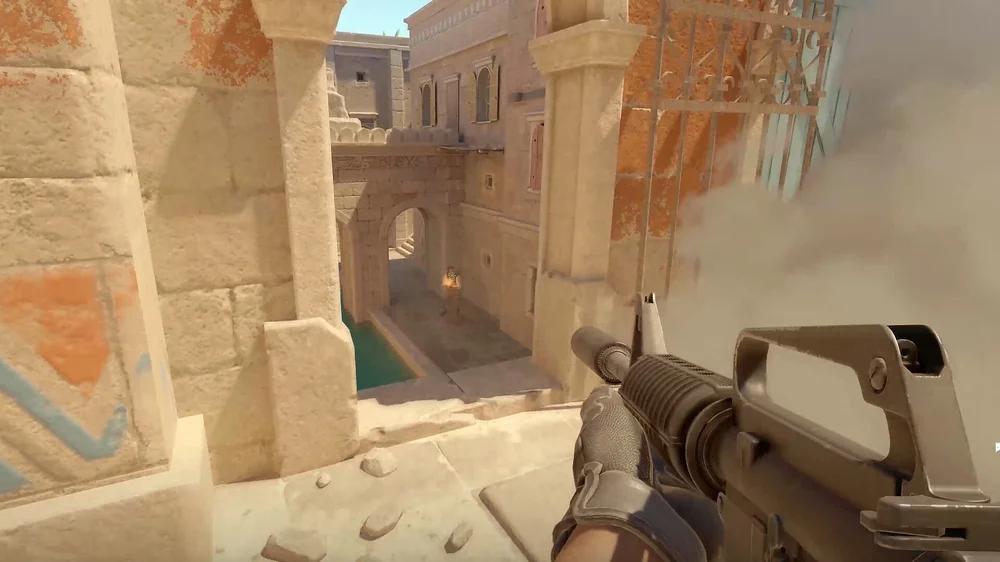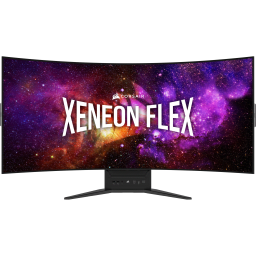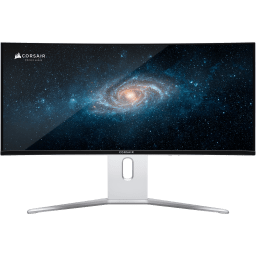Counter-Strike 2 is the follow-up to the most successful competitive FPS of all-time, Counter-Strike: Global Offensive. While the community wasn’t entirely pleased when CS2 replaced CS:GO, Counter-Strike 2 remains every bit as competitive as Global Offensive was.
Even though the new game retains the same esports competitive gameplay, it has undergone a significant graphical upgrade. Where Counter-Strike: Global Offensive was famous for running on virtually any hardware, Counter-Strike 2 is far more demanding. This is unfortunate, as getting maximum FPS is vital for games like this. Let’s take a look at the Counter-Strike 2 system requirements to ensure you’re operating at your best.

Counter-Strike 2 Recommended System Requirements
We find ourselves in a strange situation here as the Steam Store page for Counter-Strike 2 lists only a set of minimum requirements. Furthermore, they are “minimum” in the literal sense of the word, as in just enough for the game to load, with no consideration given to how the game will run, only that it will run. So, let's move onto the requirements we do have.
Counter-Strike 2 Minimum System Requirements
- OS: Windows® 10
- CPU: 4 hardware CPU threads – Intel® Core™ i5 750 or higher
- RAM: 8 GB
- GPU: Must have 1 GB or more and be DirectX 11-compatible with support for Shader Model 5.0
- DirectX Version: 11
- Storage: 85 GB available space

Can I Run Counter-Strike 2?
We mentioned at the outset that Counter-Strike 2 is significantly more demanding than CS:GO, however, this is not saying much, so despite the lack of specificity from Valve, you’ll probably be totally fine as it’s still plenty accessible. Especially if you don’t mind adjusting some of the graphical settings down a few notches.
That being said, if you’re still not happy with the performance you’re getting and the gaming experience overall, then there are some things you can do to help. Given the enhanced focus on lighting, shadows, and of course those gorgeous volumetric smokes, CS2 hangs on the GPU far more than it used to, so a new 50 Series from Nvidia, or 90 series from AMD will improve the performance massively.

However, given that games like Counter-Strike 2 are all about hitting the maximum frame rate possible, all the performance improvements are for nought without a gaming monitor that can hit a high refresh rate. The correct option here is the CORSAIR XENEON 27QHD240 OLED. It can hit 240Hz and has a response time of 0.03ms, so with this monitor, your hardware will no longer hold back your performance potential.
That being said, it does cost $999, which may be too much for some, so the XENEON 315QHD165 is a good option at $399. The refresh rate is lower at 165Hz, and the response time is a little lower at 1ms, but the panel is five inches larger. Even with this option you’ll still be world’s ahead, as most people only have a 60Hz monitor.

What Kind of Game is Counter-Strike 2?
We don’t want to mince words here: Counter-Strike 2 is not for everyone. Like its predecessor, Counter-Strike: Global Offensive, it is an extremely competitive game and the learning curve is basically vertical.
For some additional context we’ll try to compare it to an FPS most people are familiar with: Call of Duty. Of course, COD games have varied over the years, too, but for this purpose, we can generalise.

Compared to COD, Counter-Strike 2 is a lot faster, a lot snappier, and a lot more reliant on fast reflexes. Accuracy is far more important, too. You can go from full health to deceased in a matter of milliseconds. Most weapons can kill you in one or two shots to the head, and that is exactly where everyone is aiming. The parlance used to describe this is “Time to Kill” or TTK. Counter-Strike 2 has a very low TTK, whereas the likes of Call of Duty, Apex Legends, or Fortnite have a comparatively high TTK.
Another aspect of CS2 that compounds this issue is the movement. It is very slow. Running in CS2 is closer to crouch-walking in most FPS games which means that when you end up in someone’s sights, there's not much you can do. It’s you or them (usually you). You have basically no chance to duck behind a wall or run around a corner, and when you get shot it slows your movement further.
This microscopic window of opportunity and equally small lifespan is why getting a monitor that can handle high FPS gameplay is so important. It’s proven that a higher refresh rate monitor gives you more time to react in these situations.

Another pain point experienced by many coming from more casual FPS shooters is that you cannot aim down sights (ADS) with most weapons. You can do with sniper rifles and some DMR-type guns, of course, but most guns must be fired from the hip. This presents two issues that might require new players to un-learn some habits.
The first is that shooting while moving is basically useless. When moving your weapons become so inaccurate that you have no real options other than to hit crouch and stand your ground. Those who cut their teeth in fast moving games like Apex Legends will have a tough time being so limited in terms of mobility.

Another issue caused by the lack of ADS is that you are entirely reliant on the crosshair. It expands when moving to indicate decreased accuracy and contracts while stationary to give a more reliable idea of where your shots may land. Further complicating this is that the crosshair can be customized to an almost limitless degree. Some players extend it to all four edges of the screen, while others shrink it to a single pixel in the center. Adjusting the crosshair can significantly improve your aim, making it yet another factor you’ll need to master.
If all this sounds overwhelming, intimidating, and downright ridiculous, you’re not wrong. Regular FPS players, especially those coming from consoles, probably won't enjoy the first 10, 20, or even 50 hours of Counter-Strike 2. But if you can push through this phase and stay enthusiastic, you’ll find yourself hooked on the most competitive FPS out there – one that can be as rewarding as it is infuriating.

PRODUCTS IN ARTICLE









